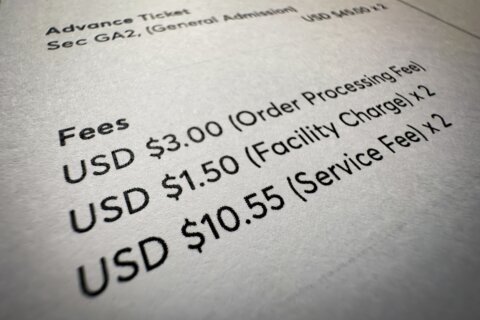ANNAPOLIS, Md. (AP) — Maryland Gov. Larry Hogan formally accepted new congressional and state legislative maps from a panel on Friday that he plans to propose to the legislature. The governor also signed a proclamation for a Dec. 6 special session of the General Assembly to approve new districts for the state’s eight congressional seats.
Legislative leaders, who petitioned Hogan to call the special session earlier in the day, created a separate panel months ago that is still working on its maps.
Because Democrats in the legislature hold a veto-proof majority, they ultimately control the redistricting process, but Hogan is using his unique position as a Republican governor during a Maryland redistricting cycle to call for taking politicians out of the process of drawing district lines.
At a news conference, Hogan said he will be submitting the maps produced by the panel he created. The commission had nine members, including three Democrats, three Republicans and three independents.
“Their focus has been on fairness, transparency and accountability, and these maps actually respect natural boundaries and the geographic integrity of our jurisdictions, communities and neighborhoods,” Hogan said.
Unlike past Maryland governors, Hogan said he kept himself out of the process of drawing new district lines.
“I chose not to draw my own maps but to submit the ones from this esteemed citizen panel,” Hogan said.
Over the past seven months, the commission has held 36 public meetings with more than 4,000 attendees. It provided an online mapping application portal for the public to submit maps — and a total of 86 maps were sent in for consideration.
Maryland’s congressional map has repeatedly been criticized and challenged in court for being unfairly drawn to benefit Democrats. In a state where Democrats outnumber Republicans 2-1, Democrats hold a 7-1 advantage over the GOP in the state’s eight U.S. House seats.
Before Maryland last redrew the state’s congressional districts a decade ago under Democratic Gov. Martin O’Malley, Democrats held a 6-2 advantage over Republicans. The state’s western Maryland district was changed significantly, and Republican Rep. Roscoe Bartlett was defeated in 2012 by Democrat John Delaney, leaving Rep. Andy Harris as the lone Republican congressman in the state.
One of the most notable differences in the map Hogan is supporting would make the western Maryland district resemble what it once was with more Republican voters.
The governor has repeatedly proposed legislation to reform redistricting by taking politicians out of the process and putting it in the hands of a nonpartisan board, but the measure has never advanced.
For decades, Hogan said, Maryland’s political powerbrokers have largely dominated the process, “rigging the system to eliminate competition by concentrating one party’s voters as much as possible while segregating another party’s voters into a larger number of districts.”
“This is exactly the kind of formula that leaves people to doubt whether their democracy is truly working for them,” Hogan said.
House Speaker Adrienne Jones, a Baltimore County Democrat, said lawmakers will look at what the governor presents. She also noted that the panel she and Senate President Bill Ferguson are on is still working and receiving input from the public. The panel includes several other state lawmakers, including two Republicans.
“We haven’t finished our process yet,” Jones said Friday.
The congressional map that ultimately ends up getting approved by the legislature would be subject to the governor’s veto, which would take a three-fifths vote to override.
“If we thought the maps were unfair, I would veto them,” Hogan said. “We would try to sustain the veto. If they overrode the veto, I think they’d probably be sued.”
Maps also are being proposed for the 188 seats in the General Assembly. The governor will propose that map on the first day of the regular legislative session on Jan. 12. Lawmakers will then have 45 days to either accept that map or create an alternative.
The once-a-decade redistricting process is taking place because of the release of 2020 census data showing how populations have changed in neighborhoods, cities and counties since 2010.
____
This version corrects word “Democrats” to “Republicans” in 10th paragraph.
Copyright © 2024 The Associated Press. All rights reserved. This material may not be published, broadcast, written or redistributed.







